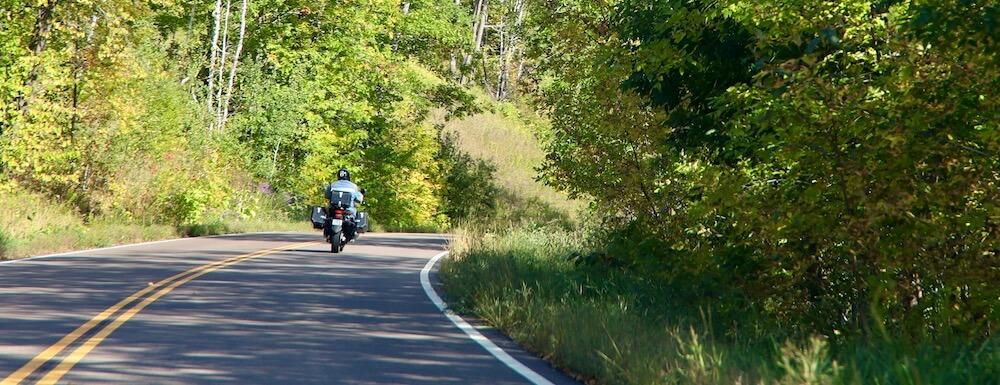What Do You Wear Beneath Your Riding Gear? In nice weather.
The minimum we recommend wearing under an Aerostich suit (Darien, R-3, Cousin Jeremy, all of them) is a T shirt and shorts. For most of the warmer part of the year that's what I wear. Specifically, these shorts, ‘commando’ (without boxers or briefs): Mid-Weight Cotton Shorts and usually a Polo-type shirt like this.
This combination is comfortable and absorbs moisture well. The Polo-type shirt is a slightly heavier 100% cotton fabric than a T shirt, and a little fancier/dressier, which somehow feels better in most off-the-bike situations such as stores and restaurants, etc. In my imagination the cotton shorts similarly look more socially presentable than other options in off-the-bike situations, however when I’m riding all day or on a multi-day trip, I like to wear AD-1 armored pants over them, and they typically remain on continuously until riding ends for the day.
All Aerostich gear is deliberately designed to be as lightweight as possible to improve rider comfort, and to also be sacrificial in crash situations. When we were pioneering armored textile gear back in the 1980’s, this way of thinking about protective gear was unknown and for some riders was radical and unacceptable. At the time leathers were the only 'serious' option and they were all designed to be heavy and thick enough to withstand repeated crashes.
(I've always felt that if after a crash a rider stood up relatively ok and then the rider's completely shredded garment fell to the ground in tatters and smithereens around their ankles it would be perfect. Sort of like a scene from one of those old Warner Brothers Road Runner cartoons. And then the hapless rider would buy another suit - Acme brand, of course.)
We see a lot of crash-damaged gear because we offer repair services. Studying these garments has taught us a lot. One can break down abrasion damage into two overlapping kinds: 1.) areas where the garment was under higher load as it rubbed along the pavement, and 2.) areas where it wasn’t.
The areas which usually are under high load are the elbows, shoulders, hips, and knees. In our gear these places are reinforced with multiple layers of abrasion-resistant fabric, and beneath the fabric there are additional layers of material associated with the impact armor. We’ve never seen crash abrasion wear penetrate through all of those (usually five or six) layers.
Other areas of a garment which are not under load are typically only scuffed, but there are exceptions. For example, if a rider slides on his bottom (seat/butt) a long way during a very high-speed crash, a layer of fabric can be worn through, which is why there are two layers of abrasion resistant fabric there. The faster the get-off and the longer the slide, the more potential there is for abrasion to wear through even very strong fabric. We design our gear to withstand even higher speed crash-abrasions while also recognizing they are rare. Riders who frequently ride in mid three-digit speeds (120-170 mph) should wear race leathers.
Even though I’ve become relatively old, I’ll still get briefly into the 100+ speed range several times a year (typically when I’m passing several cars in a string on a two-lane road, etc), but normally I’m riding somewhere the 60-85 mph range when on highways outside of my urban area. Aerostich gear is designed to provide acceptable abrasion protection for all of these (and my) riding scenarios, regardless of what one wears underneath.
Winter, however, is another story.
- Mr. Subjective, November 21

Louis
Thank you!